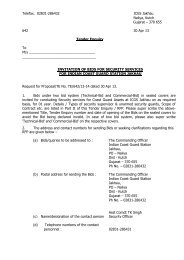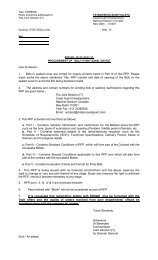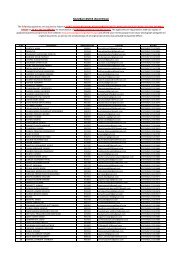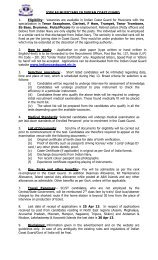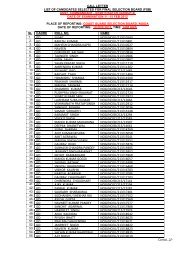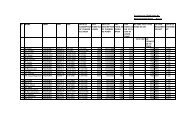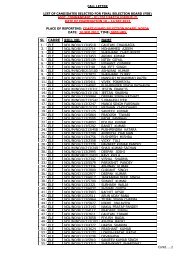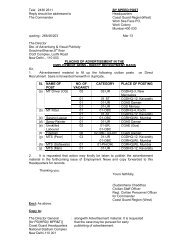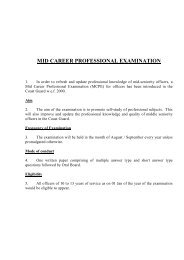eastern region oil spill disaster contingency plan - Indian Coast Guard
eastern region oil spill disaster contingency plan - Indian Coast Guard
eastern region oil spill disaster contingency plan - Indian Coast Guard
Create successful ePaper yourself
Turn your PDF publications into a flip-book with our unique Google optimized e-Paper software.
- 26 -<br />
recreational facilities and centers about the incident and the restricted<br />
area.<br />
(f) Control of discharge – ICG or other units can perform damage<br />
control and prevent further discharge<br />
(g) Ascertain the quantity of <strong>oil</strong> discharged.<br />
(h) Obtain weather and oceanographic inputs like current, tidal<br />
conditions and wind parameters<br />
(i) Ascertain physical and chemical characteristics of <strong>oil</strong><br />
(j) Carryout aerial assessment and issue necessary orders<br />
(k) Start a log for actions taken and assets utilized for processing claims<br />
(l) Send out communication for mobilisation of PR equipment<br />
(m) Send out communication to relevant authorities to provide for<br />
support utilities like barges, tugs, small tankers for transfer of cargo, other<br />
material and men required through sub-contractors etc.<br />
(n) Send information to NAVAREA Coordinator for restriction of area<br />
(o) On obtaining inputs, carryout assessment of the <strong>spill</strong>, likely<br />
movement and the area likely to be affected with the core team.<br />
(p) Calculate the time and space for effective deployment of boom for<br />
containment or diversion of slick<br />
(q) Carryout preventive booming in sensitive areas<br />
(r) Carryout Net Environment Benefit Analysis and establish the best<br />
possible response with regard to time and space.<br />
(s) If time and space does not permit deployment of boom and recovery<br />
of <strong>oil</strong>, decide for the best alternative response measure available after<br />
weighting the cost benefit analysis. In some cases shore booming and<br />
deviation methods are effective to collect <strong>oil</strong> on shore than on sea.<br />
(t) Deploy necessary personnel and equipment for shoreline cleanup, if<br />
required.<br />
(u) Assume <strong>oil</strong> drifted to respective <strong>oil</strong> handling agencies control areas<br />
and exercise the <strong>plan</strong> holders to mobilize their PR equipment.<br />
(v) All <strong>plan</strong> holders should exercise their respective procedures for<br />
cleanup their water (upto 500 m) around <strong>oil</strong> rigs, SBMs etc and the entire<br />
port limit by respective port).<br />
(w) The shore line cleanup team should identify dispersal area and wear<br />
protective clothing.




